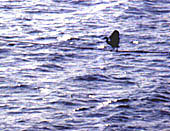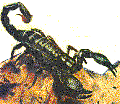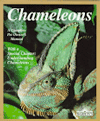
![]()
Search the Journey to Forever website – click HERE
|
Journey to Forever: Make a donation |
Navigation
Contact usTo Keith Addison Handmade Projects |
Kids' crazes
Keith writes:
Every year there was a kids' craze, at least one: the first one I can remember was the craze for playing cards. It was 1953 and I was seven, and all the kids got swept up by it. Other creatures have just as much right to their lives as you have -- and maybe more: they're not responsible for as much pollution and waste as you are, you're more of a burden on the world than they are. Sisters of silk -- Hong Kong's Chinese Amahs
We didn't actually play with the cards, well, not proper card games like poker. It didn't matter whether it was an ace or a six, spades, clubs or diamonds -- what was important were the pictures on the backs of the cards, and how many different kinds you had.
There were hundreds of them, more -- in no time a whole new currency system evolved: one of these rare ones with beautiful reproductions of Old Masters on the back were worth three of these, five of those; exchange rates, credit, debt. Poor kids and rich kids -- card millionaires. School breaks became frenzied playground trading sessions.
After a few weeks it ended. The cards vanished. Nobody cared about cards anymore. Nobody knew where they went, nobody knew where they'd come from. Peace for awhile. Then, marbles! -- cats-eyes, "goens" (big ones), marbles with an iridescent sheen, an amazing variety of marbles. These you didn't just trade, you had to win them, in complicated games involving flicking and rolling skills, games which somehow everyone knew already, nobody had to be taught.
Matchboxes, cigarette packets (empty), bottletops... What was strange about all this, though it didn't strike me as strange at the time, was the sheer profusion: where did it all come from? We had packets of cigarette brands that weren't even sold in the shops -- maybe in shops in other countries, but not in our shops; tops from bottles we'd never seen, matchboxes from all over the world. For awhile they'd be everywhere, then they'd vanish as mysteriously as they'd come and everyone forgot about them. The grownups (parents, teachers) never even knew about it in the first place.
Does this still happen, in these days of kids' fashions, kids' advertising, kids' media, and the global supermarket?
Some of the crazes were alive: at one stage everyone had white mice, cute little things with bright red eyes. They didn't mind travelling around in your pocket. We all had mice in our pockets. I can't remember the toilet arrangements, but I don't remember having smelly pockets either.  I often had a chameleon hanging onto me somewhere as well, but I don't think that was a craze, I just had chameleons. Some kids had pimples, I had chameleons.
I often had a chameleon hanging onto me somewhere as well, but I don't think that was a craze, I just had chameleons. Some kids had pimples, I had chameleons.
And silkworms. The silkworm craze came round a few times. In fact it never really vanished, like the cards and the other stuff, it just sort of ebbed and flowed. Silkworms were tidal. Sometimes there'd be yellow silk cocoons, sometimes bits of card covered with little eggs. Whichever, you'd put them in a shoe box with some holes in the lid. If cocoons, after awhile the moths would "hatch", softening the cocoons with spit and chewing their way out, lovely white moths covered in soft fur, wings too small and weak to fly. The males were thin, the females fat. After a while the females would lay eggs, then they'd all die.
It took a month or so for the eggs to hatch, producing a swarm of tiny black silkworms (caterpillars actually), and then would start the daily early-morning chore of raiding Old Man Russell's garden nearby to filch a supply of leaves from his precious mulberry tree.
The worms grew fast, and they grew fewer, until there were a few dozen large grey silkworms with huge appetites -- always a bit of a relief when they started spinning their webs in a corner of the shoebox and eventually vanished into a cocoon.
We knew you were supposed to boil the cocoons to kill the pupas inside before they turned into moths and chewed their way out again, ruining the cocoon, but we all thought that was cruel and I never heard of anyone doing it.
One cycle was usually enough -- you'd give the cocoons away, and give Old Man Russell's mulberry tree a break.
If it wasn't silkworms it was something else -- goldfish, tadpoles, tortoises, scorpions. Most of the kids generally had creatures of some kind.
Somehow I usually had birds, injured birds I'd nurse back to health, babies that fell out of nests, that had to be fed every hour.

A tailorbird nest -- feeding a nestling is full-time work.
-- Keith Addison
None of this had anything to do with school. "Nature Study" was the name of a textbook, lessons twice a week, and written exams four times a year -- and none of that had anything to do with the creatures we kept. The two things were entirely separate, in fact and in our minds. Pocketsful of white mice, silkworms, pet scorpions, hungry nestlings -- such things just weren't in the school curriculum. And now they are. And that's progress.
Care and cautions
But you're more intelligent than a scorpion or a chameleon? You think so? This is intelligent:
"Man's work with Nature that further's Nature's aims is the work that rewards him the best." (I-Ching)
So if you want to be really selfish, use your intelligence to try figure out just what Nature's aims might be.
That might take you a long time. Scorpions and chameleons automatically further Nature's aims, they can't help it -- we can: we have the choice of being stupid about it. Just look around you!

Just playing: this reef egret walked the rope for fun -- it would have been much easier to fly.
-- Keith Addison
If you want to keep creatures, go ahead, you can learn a great deal from them. But treat them with respect -- they have lives of their own, they're not just toys to discard when you get bored with them. One thing they can teach you is the responsibility of caring for another life.
Lesson One
Find out just what's involved BEFORE getting a pet of any kind!
Most of the creatures I had as a kid weren't pets, they were wild, and we never kept them for long -- after a while we'd put them back where they came from. There's a great deal more to it if you live in a city, or if you want to keep something that comes from another part of the world.
Want a pet scorpion? Try a giant black Emperor scorpion from West Africa -- ideal for beginners because of their "forgiving" nature and mild (ie non-fatal) sting.

Emperor scorpion
Scorpions from Pets and Us (USA)
http://www.petsnus.com/scorpions.htm
Scorpion Caresheet from the Amateur Entomologists' Society
http://www.theaes.org/scorpion.htm
Lots of information on scorpions at the Tarantula's Burrow at arachnophiliac.com -- also covers other kinds of adorable, cuddly wildlife like snakes and tarantulas.
http://www.arachnophiliac.com/burrow/home.htm
Naturalist Eugène Marais on scorpions -- or rather one scorpion:
"Let us turn to the study of the behaviour of another creature, which is zoologically classified near the insects, but which psychologically should be in the mammal class. I am referring to the South African scorpion.
"Among my tame scorpions there was a gigantic female which gained a good deal of fame. She was five and a half inches long. She first introduced herself to Mr Charlie Pienaar, by killing a full-fledged chicken in his presence. She tackled the chicken's leg, clung on, and gave one sting of her deadly lance, just above the joint. Within a few seconds the chicken was paralysed and was dead in ten minutes. Later on she became so tame and knew me so well that I could push a finger before her suddenly and allow her to grip me with her claws. She would bring her sting into contact with my skin, before recognizing me. Immediately she would relax and withdraw her dangerous weapon. I could handle her freely. She liked being scratched gently. Shortly after she came into my possession I noticed that an interesting event was shortly to take place. I watched her continually and gave her every care, for I wished to observe every stage of the process. I must admit that in those days I knew so little zoology that I expected to see her lay eggs. I was astounded therefore to see her give birth to sixteen living babies. Fully harnessed and spurred they made their entry by pairs, small white helpless babies -- but perfect little scorpions. There was no doubt at all that the delivery caused the mother much pain. I remember a woman asking me anxiously whether the young ones were born with pincers and stings, and then giving a prayer of thanks that human babies at least do not possess these.
"What seemed very strange, too, was that the scorpion mother loved her queer little youngsters. Very carefully she helped them on to her back, where they remained sitting in two rows with their heads and pincers directed outwards and their tails interlaced behind them. I knew her well enough to tell by her behaviour that she would not allow any handling of her babies, so I did not risk doing this until they were fully grown. The mother would tear their food into small pieces and feed them carefully, while above them she waved her sting defensively. A more loving mother you will find nowhere else in nature."
-- From "The Soul of the White Ant" by Eugène N. Marais, 1937, Chapter 10, Pain and Travail in Nature. Full text online. Contents:
http://journeytoforever.org/farm_library/Marais1/whiteantToC.html
Chameleons and more from Seaside Reptiles (USA)

Diego Suarez chameleon
http://veiledchameleon.com/index.htm
Good information from Michael Fry on chameleons and keeping them -- and cautions: not for everyone, hard to look after, they die easily!
http://www.skypoint.com/members/mikefry/chams.html
 "Chameleons -- A Complete Pet Owner's Manual", R.D. Bartlett and Patricia P. Bartlett, 1995, Barrons Educational Series, Inc., ISBN 0812091574 $6.95
"Chameleons -- A Complete Pet Owner's Manual", R.D. Bartlett and Patricia P. Bartlett, 1995, Barrons Educational Series, Inc., ISBN 0812091574 $6.95
Chameleons are among the most sought-after members of the lizard family by terrarium owners, but they also require special care. This owner's manual tells chameleon fanciers everything they need to know. Filled with color photos and line drawings. From Barrons Educational:
http://store.yahoo.com/barronseduc/0812091574.html
The Chameleon information Network (CiN) is a worldwide organization of people with an interest in chameleons that "shares information about these unique creatures in order to maximize their chances of surviving in the future" and "supports conservation of the fragile natural environments of all chameleons around the world". Journal and other resources.
http://www.animalark.mn.org/cin/
Related projects
Silkworms in a shoebox
Mulberry trees